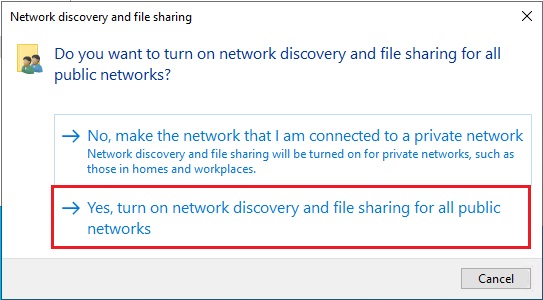
How To Create A Virtual Network In Azure – Lab3
In this tutorial you will learn how create a Virtual Network in your Azure Lab. I will guide you through setting up a Virtual Network and deploying two Virtual Machines onto your virtual network. Afterwards we will create a shared folder and access it from one of the other Virtual Machines.
Tasks Details
- Sign into Azure portal.
- Create a Virtual Network.
- Create two virtual machines.
- RDP in virtual Machines.
- Create shared folder.
- Access shared folder from another VM.
Task 1: Log into Azure Portal
- Open a browser tab and go to the Azure portal using URL https://portal.azure.com.
- Sign in with your username and password on azure portal.

Task 2: Create a Virtual Network
1. There are a few options in which you can locate Virtual Networks. Let’s click on Virtual Networks from the Menu in the Left panel. You can also use the search bar at the top to find the Virtual Networks page or you can use the Virtual Networks icon right Infront of you.

2. Once Virtual Networks page loads click on the Create button.

3. Now within the Basics tab:
- Resource group:
- Click Create new: AzureLab-VNet01
- Instance details:
- Name: AzureLab-VNet01
- Region: Select Australia East
4. Click the button Next : IP Addresses

5. In the IP Addresses tab, enter this information:
- IPv4 address space : Enter 10.10.1.0/24

6. Now click on Add Subnet.
- Subnet Name: AzureLab-VNet01
- Subnet Address Range: 10.10.1.0/24
- Click the Add button.

7. Click the Review + Create button.
8. Once you see a light green ribbon with Validation passed click the Create button.
9. Wait a few and your Virtual Network deployment should complete. successfully.

Task 3: Create 2 Virtual Machines
1. Search for Virtual Machines and you should see it from the drop bown.
2. Now start by clicking on the Create button and then click on Azure virtual machine.

4. Now on the Basic tab
-
- Subscription: Leave it default selected.
- Resource Group: Click Create New and name it AzureLab.

-
- Virtual Machine Name: Enter a VM name.
- Ex: AzureVM01
- Region: Choose a Region Australia East.
- Availability Options: Leave availability zone as default
- Security Type: Leave it as Standard.
- Image: Choose Image – Window Server 2022 Datacenter: Azure Edition – Gen2
- Size: Click on the drop down and select a size for your virtual machine.
- Virtual Machine Name: Enter a VM name.

-
- Configure ADMINISTRATOR ACCOUNT
- Enter Username
- Ex: Lab1
- Enter Password & Confirm Password (Password should follow the format given in Azure)
- Enter Username
- Configure ADMINISTRATOR ACCOUNT

-
- Configure INBOUND PORT RULES
- Public inbound ports: Choose Allow selected ports
- select inbound rule HTTP, HTTPS, SSH and RDP from dropdown.

- click on Next:Disks >
- Configure INBOUND PORT RULES
5. Now on the Disks tab.
-
- OS disk Type: Select Standard SSD

-
- Click on Next : Networking >
6. Now on the Networking tab.
- Virtual network: Select AzureLab-VNet01
- Click the Next : Management button.

7. Now on the Management tab.
- Monitoring :
- Boot diagnostics: Set to Disable.
- Click on Next : Advanced >
8. Now on the Advanced tab.
-
- Leave Management as default, there is no need to change anything.
- Click on Next : Tags >
9. Now on the Tags tab.
- Tags: You can add tag in Name/Value pair as per your understanding.
-
- Name : Virtualmachines
- Value : AzureLab
-

-
- Click on Next : Review + Create >
- Next: Review + Create
- If you see this “Validation passed” message on top of the screen, that means you have configured the virtual machine successfully or if you see any error message, then you will need to review your settings.

-
- Click on Create >Button

- Now you can see message Deployment is in progress:

- Once you see the message Your deployment is complete your virtual machine is ready.
10. Follow the same steps and create your 2nd Virtual Machine named: AzureVM02

Task 4: RDP into Virtual Machine
- Start from the Home page and click on Button Virtual Machines
- You can see your virtual machines in the list, click on your VM and you can see virtual machine details on your screen. ( Do this these steps for both virtual machines )
- Click on Connect dropdown and select RDP.

- Click on Download RDP File.

- Open and run the RDP file and click connect.

- Enter the username and password you have provided and click ok.

- Click Yes on the certificate prompt.
- You should have successfully logged into both virtual machines.
Task 5: Create Shared Folder
1.On Virtual Machine AzureVM01.
- Open Windows Explorer
- On C:\ create new folder called: Share
- Right click “Share” > Give access to > Specific people… Click Share button.

2. You will be prompted for network Discover and file sharing, click yes.

3. You should see a successful message of your folder share with the path \\AzureVM01\Share

Task 6: Access shared folder from another VM.
1. Remote connect to virtual machine: AzureVM01.
2. Open up Windows File Explorer and within the field type in \\AzureVM01 and hit ENTER.

3. You should now successfully access your Share folder from AzureVM01.

You have successfully finished Azure Lab 3
Don’t forget to delete your virtual machines when you are done.

I hope this article was helpful, if you have any questions, please feel free to contact me. If you would like to be notified of when I create a new post, you can subscribe to my blog alert.
Discover more from Patrick Domingues
Subscribe to get the latest posts sent to your email.